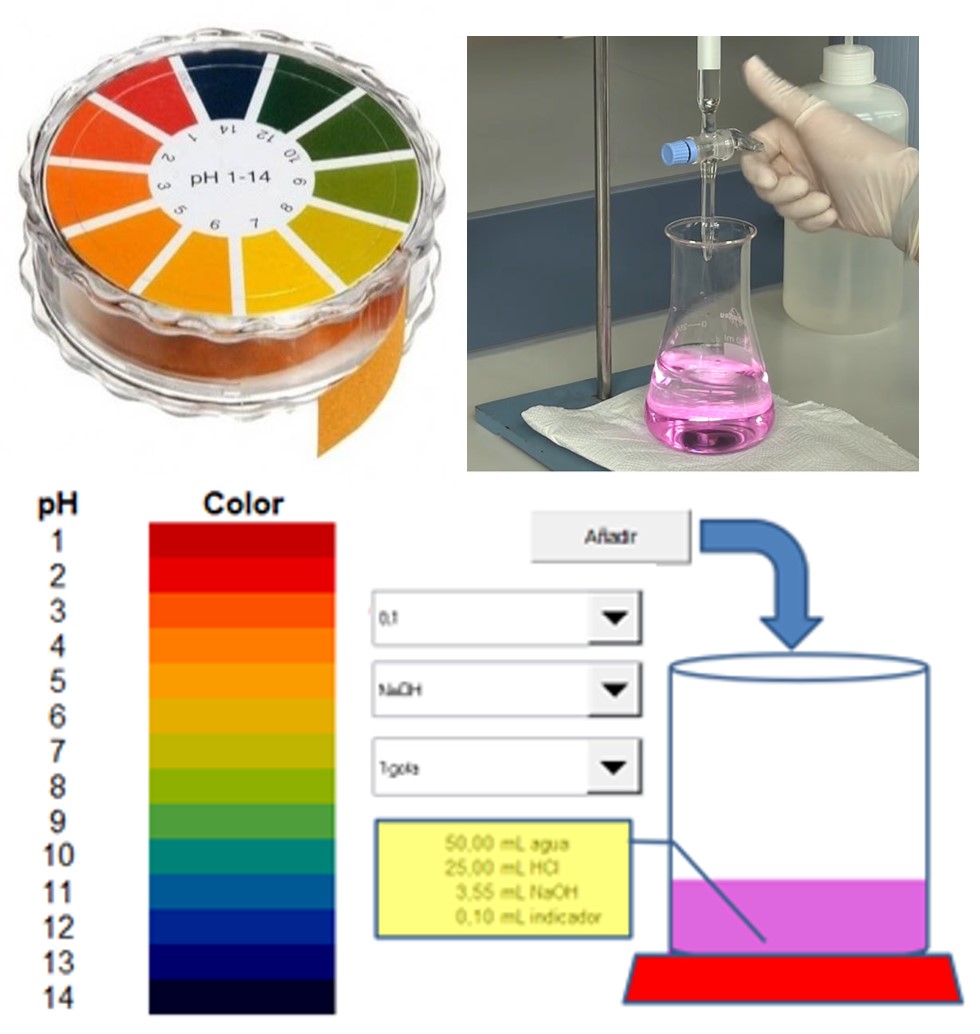Virtual Laboratory Practice of General Chemistry: acid-base
Main Article Content
Abstract
The COVID-19 pandemic and the related restrictions forced the reorganization of learning methodology and gave the central role to remote learning even for Laboratory experiments. A possible strategy is virtualizing laboratory practices, which allows a non-face-to-face alternative in the case of difficulties in carrying them out. Although many commercial programs allow such virtualization, specific calculation tools have been programmed to better fit between conventional and virtual. For simplicity, Visual Basic of Excel has been chosen. In this work, an acid-base practice is described. The theoretical basis and the experimental setup used for traditional experimentation are summarized, and the calculation tool programmed to emulate the obtaining experimental data with the instructions for handling is described. The virtual practice has been tested with groups of about 70 students and, with a brief explanation, has worked correctly without technical problems. The results obtained are satisfactory compared to the traditional method since the detailed analysis of the student’s grades shows that the acquired skills are comparable in both methodologies. Therefore, it can be concluded that virtual practices are a flexible option for teaching remote practices or as a complement to traditional experimentation.
In this work, an acid-base practice is described. The theoretical basis and the experimental setup used for traditional experimentation are summarized, and the calculation tool programmed to emulate the obtaining experimental data with the instructions for handling is described.
The virtual practice has been tested with groups of about 70 students and, with a brief explanation, has worked correctly without technical problems. The results obtained are satisfactory compared to the traditional method since the detailed analysis of the student's grades shows that the acquired skills are comparable in both methodologies. Therefore, it can be concluded that virtual practices are a flexible option for teaching remote practices or as a complement to traditional experimentation.
Article Details
Citas en Dimensions Service
References
Andrews, J. L., de Los Rios, J. P., Rayaluru, M., Lee, S., Mai, L., Schusser, A., & Mak, C. H. (2020). Experimenting with At-Home General Chemistry Laboratories During the COVID-19 Pandemic. J. Chem. Educ., 97, 1887−1894.
Babincáková, M., & Bernard, P. (2020). Online Experimentation during COVID-19 Secondary School Closures: Teaching Methods and Student Perceptions. J. Chem. Educ., 97, 3295−3300.
Cabrera Coronel, A. M., Centurión de Gómez, N. S., & Mora Rojas, C. O. (2022). Virtualización de clases presenciales en la universidad. Educación Química, 33(3), 107-144. http://dx.doi.org/10.22201/fq.18708404e.2022.3.80254
Chang, R., & Oberby, J. (2020). Química (13ed.). Madrid: McGraw-Hill.
Coto, B., Arencibia, A., & Suarez, I. (2016). Monte Carlo Method to Explain the Probabilistic Interpretation of Atomic Quantum Mechanics. Computer Applications in Engineering Education, 24, 765−774.
Coto, B., & Suarez, I. (2018). Euler Algorithm to Solve Reaction Kinetic Equations: Mathematical Formulation, Programming and Applications. Computer Applications in Engineering Education, 26, 29−36.
Coto, B., Suárez, I., Tenorio, M. J., & González, M. A. (2023). Virtualization of Laboratory Practices Using Visual Basic Excel. J. Chem. Education, 100, 366-370.
Domenici, V. (2020). A Course of History of Chemistry and Chemical Education Completely Delivered in Distance Education Mode during Epidemic COVID-19. J. Chem. Educ., 97, 2905−2908.
Fisher, A. A. E. (2019). An Introduction to Coding with Matlab: Simulation of X-ray Photoelectron Spectroscopy by Employing Slater’s Rules. J. Chem. Educ., 96, 1502−1505.
Holme, T. A. (2020). Special Issue on Insights Gained while Teaching Chemistry in the Time of COVID-19. J. Chem. Educ., 97(9), 2375–2377.
Idoyaga, I. J., Vargas-Badilla, L., Nahuel Moya, C., Montero-Miranda, E., Maeyoshimoto, J. E., Capuya, F. G., & Arguedas-Matarrita, C. (2021). Conocimientos del profesorado universitario sobre la enseñanza de la química con laboratorios remotos. Educación Química, 32(4). http://dx.doi.org/10.22201/fq.18708404e.2021.5.79189
Labster. Teach Chemistry with Virtual Labs. https://www.labster.com/chemistry-virtual-labs/?msclkid=%20f0e812a2b77e11ec8be0f208c97ab538 (accessed 2023-12-14).
Martínez Urreaga, J., Narros Sierra, A., de la Fuente García-Soto, M. M., Pozas Requejo, F., & Díaz Lorente, V. M. (2006). Experimentación en Química General. Madrid: Paraninfo.
Mercier, P. H. (2018). Applying Le Châtelier’s Principle To Model Strong Acid−Strong Base Titration. J. Chem. Educ., 95, 521−527.
Nyasulu, F., McMills, L., & Barlag, R. (2013). Weak Acid Ionization Constants and the Determination of Weak Acid−Weak Base Reaction Equilibrium Constants in the General Chemistry Laboratory. J. Chem. Educ., 90, 768−770.
Paik, S. (2015). Understanding the Relationship Among Arrhenius, Brønsted−Lowry, and Lewis Theories. J. Chem. Educ., 92, 1484−1489.
Petrucci, R. H., Herring, F. G., Madura, J. D., & Bissonnette, C. (2017). Química General (11ed.). Madrid: Pearson.
Postma, J. M., & Roberts, A. (2017). Chemistry in the laboratory (8ed.). Londres: McMillan Learning.
Putti, A. (2011). JCE Classroom Activity #109: My Acid Can Beat Up Your Acid! J. Chem. Educ., 88, 1278–1280.
Reyes-Cárdenas, F., Ruiz-Herrera, B. L., Llano -Lomas, M. G., Lechuga-Uribe, P. A., & Mena Zepeda, M. (2021). Percepción de los alumnos de química sobre el cambio de modalidad educativa en la pandemia. Educación Química, 32(4). http://dx.doi.org/10.22201/fq.18708404e.2021.5.78240.
Suarez, I., & Coto, B. (2006). Following the Extent of a Reaction with the Help of Maple. J. Chem. Educ., 83, 1726−1726.
Woodfield, B. F., Asplund, M. C., & Haderlie, S. (2009). Laboratorio virtual de Química General (3ed.). México: Pearson.

Educación Química por Universidad Nacional Autónoma de México se distribuye bajo una Licencia Creative Commons Atribución-NoComercial-SinDerivar 4.0 Internacional.
Basada en una obra en http://www.revistas.unam.mx/index.php/req.




